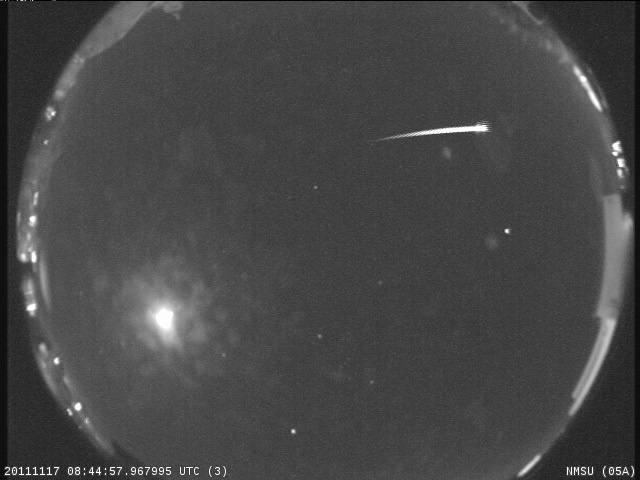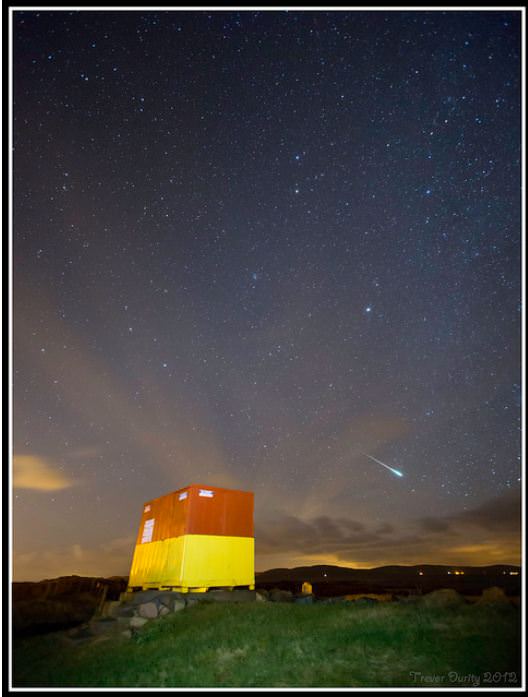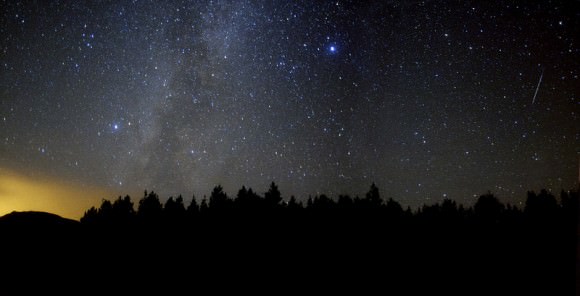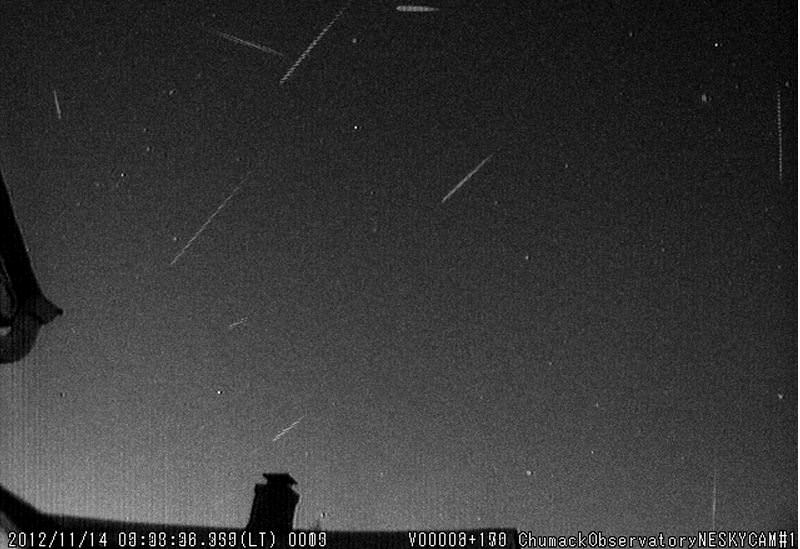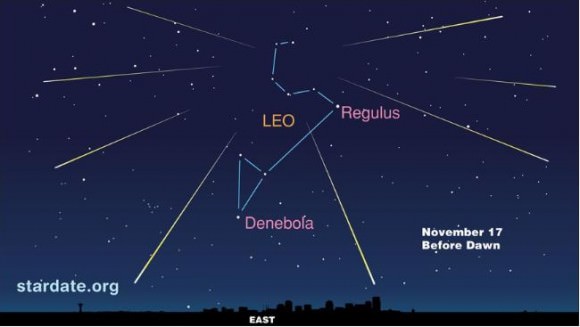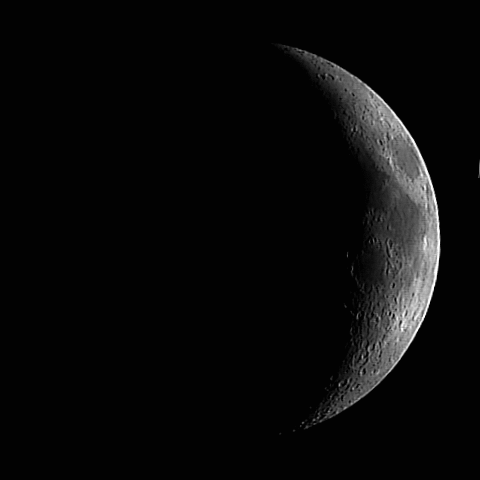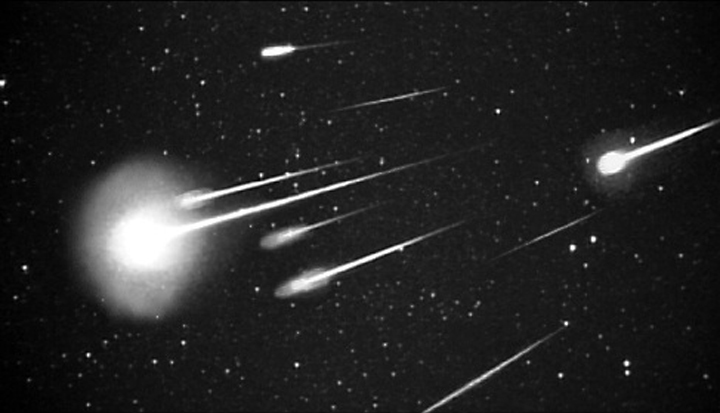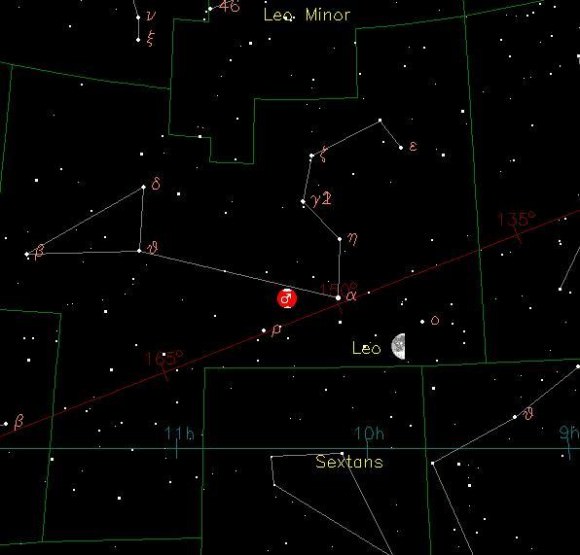Greetings, fellow SkyWatchers! While we might have to contend with the Moon again, it’s still going to be a very exciting week because the Leonid Meteor Shower is back in town! The beginning of the week brings on the Pegasid meteors and we can all use a “warm up”! There’s plenty of things to do, so whenever you’re ready, just meet me in the back yard.
Monday, November 12 – Wouldn’t we all have loved to have been there in 1949 when the first scientific observations were made with the Palomar 5-meter (200-inch) telescope? Or to have seen what Voyager 1 saw as it made its closest approach to Saturn on this date in 1980? To watch Space Shuttle Columbia launch in 1981? Or even better, to have been around in 1833 – the night of the Great Leonid Meteor Shower! But this is here and now, so let’s make our own mark on the night sky as we view the waning Moon.
This evening have a look at the lunar surface and the southeast shoreline of Mare Crisium for Agarum Promontorium. To a small telescope it will look like a bright peninsula extending northward across the dark plain of Crisium’s interior, eventually disappearing beneath the ancient lava flow. Small crater Fahrenheit can be spotted at high power to the west of Agarum, and it is just southeast of there that Luna 24 landed. If you continue south of Agarum along the shoreline of Crisium you will encounter 15 kilometer high Mons Usov. To its west is a gentle rille known as Dorsum Termier – where the Luna 15 mission remains lie. Can you spot 23 kilometer wide Shapely further south?
While skies are fairly dark be sure to keep watch for members of the Pegasid meteor shower – the radiant is roughly near the Great Square. This stream endures from mid-October until late November, and used to be quite spectacular.
Tuesday, November 13 – Today is the birthday of James Clerk Maxwell. Born in 1831, Maxwell was a leading English theoretician on electromagnetism and the nature of light. Tonight let’s take a journey of 150 light-years as we honor Maxwell’s theories of electricity and magnetism as we take a look at a star that is in nuclear decay – Alpha Ceti.
Its name is Menkar, and this second magnitude orange giant is slowly using up its nuclear fuel and gaining mass. According to Maxwell’s theories of the electromagnetic and weak nuclear forces, W bosons must exist in such circumstances – this was an extremely advanced line of thinking for the time. Without getting deep into the physics, simply enjoy reddish Alpha for the beauty that it is. Even small telescopes will reveal its 5th magnitude optical partner 93 Ceti to the north. It’s only another 350 light-years further away! You’ll be glad you took the time to look this one up, because the wide separation and color contrast of the pair make this tribute to Maxwell worth your time!
Wednesday, November 14 – Ready to aim for a bullseye? Then follow the “Archer” and head right for the bright, reddish star Aldebaran. Set your eyes, scopes or binoculars there and let’s look into the “eye” of the Bull. Known to the Arabs as Al Dabaran, or “the Follower,” Alpha Tauri got its name because it appears to follow the Pleiades across the sky. In Latin it was called Stella Dominatrix, yet the Olde English knew it as Oculus Tauri, or very literally the “eye of Taurus.” No matter which source of ancient astronomical lore we explore, there are references to Aldebaran.
As the 13th brightest star in the sky, it almost appears from Earth to be a member of the V-shaped Hyades star cluster, but this association is merely coincidental, since it is about twice as close to us as the cluster is. In reality, Aldebaran is on the small end as far as K5 stars go, and like many other orange giants, it could possibly be a variable. Aldebaran is also known to have five close companions, but they are faint and very difficult to observe with backyard equipment. At a distance of approximately 68 light-years, Alpha is “only” about 40 times larger than our own Sun and approximately 125 times brighter. Because of its position along the ecliptic, Aldebaran is one of the very few stars of first magnitude that can be occulted by the Moon.
This evening on the Moon we will be returning to familiar features Theophilus, Cyrillus and Catharina. Why not take the time to really power up on them and look closely? Curving away just to the southwest of Catharina on the terminator is another lunar challenge feature, Rupes Altai, or the Altai Scarp. Look for smaller craters beginning to emerge, such as Kant to the northwest, Ibn-Rushd just northwest of Cyrillus and Tacitus to the west.
Thursday, November 15 – Today marks a very special birthday in history. On this day in 1738, my personal hero William Herschel was born. Among this British astronomer and musician’s many accomplishments, Herschel was credited with the discovery of the planet Uranus in 1781, the motion of the Sun in the Milky Way in 1785, Castor’s binary companion in 1804; and he was the first to record infrared radiation. Herschel was well known as the discoverer of many clusters, nebulae, and galaxies. This came through his countless nights studying the sky and writing catalogs whose information we still use today. Just look at how many we’ve logged this year! Tonight let’s look towards Cassiopeia as we remember this great astronomer…
Almost everyone is familiar with the legend of Cassiopeia and how the Queen came to be bound in her chair, destined for an eternity to turn over and over in the sky, but did you know that Cassiopeia holds a wealth of double stars and galactic clusters? Seasoned sky watchers have long been familiar with this constellation’s many delights, but let’s remember that not everyone knows them all, and tonight let’s begin our exploration of Cassiopeia with two of its primary stars.
Looking much like a flattened “W,” its southern-most bright star is Alpha. Also known as Schedar, this magnitude 2.2 spectral type K star was once suspected of being a variable, but no changes have been detected in modern times. Binoculars will reveal its orange/yellow coloring, but a telescope is needed to bring out its unique features. In 1781, Herschel discovered a 9th magnitude companion star and our modern optics easily separate the blue/white component’s distance of 63″. A second, even fainter companion at 38″ is mentioned in the list of double stars and even a third at 14th magnitude was spotted by S.W. Burnham in 1889. All three stars are optical companions only, but make 150 to 200 light-year distant Schedar a delight to view!
Just north of Alpha is the next destination for tonight…Eta Cassiopeiae. Discovered by Herschel in August of 1779, Eta is quite possibly one of the most well-known of binary stars. The 3.5 magnitude primary star is a spectral type G, meaning it has a yellowish color much like our own Sun. It is about 10% larger than Sol and about 25% brighter. The 7.5 magnitude secondary (or B star) is very definitely a K-type: metal poor, and distinctively red. In comparison, it is half the mass of our Sun, crammed into about a quarter of its volume and is around 25 times dimmer. In the eyepiece, the B star will angle off to the northwest, providing a wonderful and colorful look at one of the season’s finest!
Friday, November 16 – Today in 1974, there was a party at Arecibo, Puerto Rico, as the new surface of the giant 1000-foot radio telescope was dedicated. At this time, a quick radio message was released in the direction of the globular cluster M13.
And now the annual Leonid meteor shower is underway! For those of you seeking a definitive date and time, it isn’t always possible. The meteor shower itself belongs to the debris shed by comet 55/P Tempel-Tuttle as it passes our Sun in its 33.2 year orbital period. Although it was once assumed that we would merely add around 33 years to each observed “shower,” we later came to realize that the debris formed a cloud that lagged behind the comet and dispersed irregularly. With each successive pass of Tempel-Tuttle, new filaments of debris were left in space along with the old ones, creating different “streams” that the orbiting Earth passes through at varying times, which makes blanket predictions unreliable at best.
Saturday, November 17 – If you didn’t stay up late, then get up early this morning to catch the Leonids. Each year during November, we pass through the filaments of debris – both old and new – and the chances of impacting a particular stream from any one particular year of Tempel-Tuttle’s orbit becomes a matter of mathematical estimates. We know when it passed… We know where it passed… But will we encounter it and to what degree?
Traditional dates for the peak of the Leonid meteor shower occur as early as the morning of November 17 and as late as November 19, but what about this year? On November 8, 2005 the Earth passed through an ancient stream shed in 1001. Predictions ran high for viewers in Asia, but the actual event resulted in a dud. There is no doubt that we crossed through that stream, but its probability of dissipation is impossible to calculate.
We may never know precisely where and when the Leonids might strike, but we do know that a good time to look for this activity is well before dawn on November 17, 18 and 19th. With the Moon mostly out of the way, wait until the radiant constellation of Leo rises and the chances are good of spotting one of the offspring of periodic comet Tempel-Tuttle. Your chances increase significantly by traveling a dark sky location, but remember to dress warmly and provide for your viewing comfort.
On this day in 1970, the long running Soviet mission Luna 17 successfully landed on the Moon. Its Lunokhod 1 rover became the first wheeled vehicle on the Moon. Lunokhod was designed to function three lunar days but actually operated for eleven. The machinations of Lunokhod officially stopped on October 4, 1971, the anniversary of Sputnik 1. Lunokhod had traversed 10,540 meters, transmitted more than 20,000 television pictures, over 200 television panoramas and performed more than 500 lunar soil tests. We’ll take a look at its landing site in the days ahead. Spaseba!
Sunday, November 18 – If you got clouded out of the Leonids yesterday morning, there is no harm in trying again before dawn! The meteor stream varies, and your chances are still quite good of catching one of these bright meteors.
Tonight let’s head toward an optical pairing of stars known as Zeta and Chi Ceti, a little more than a fistwidth northeast of bright Beta. Now have a look with binoculars or small scopes because you’ll find that each has its own optical companion!
Now drop south-southwest less than a fistwidth to have a look at something so unusual that you can’t help but be charmed – the UV Ceti System (RA 01 39 01 Dec -17 57 01).
What exactly is it? Also known as L 726-8, you are looking at two of the smallest and faintest stars known. This dwarf red binary system is the sixth nearest star to our solar system and resides right around nine light-years away. While you are going to need at least an intermediate-size scope to pick up these near 13th magnitude points of light, don’t stop observing right after you locate it. The fainter member of the two is what is known as a “Luyten’s Flare Star” (hence the “L” in its name). Although it doesn’t have a predictable timetable, this seemingly uninteresting star can jump two magnitudes in less than 60 seconds and drop back to “normal” within minutes – the cycle repeating possibly two or three times every 24 hours. A most incredible incident was recorded in 1952 when UV jumped from magnitude 12.3 to 6.8 in just 20 seconds!
Until next week? Wishing you clear skies!

